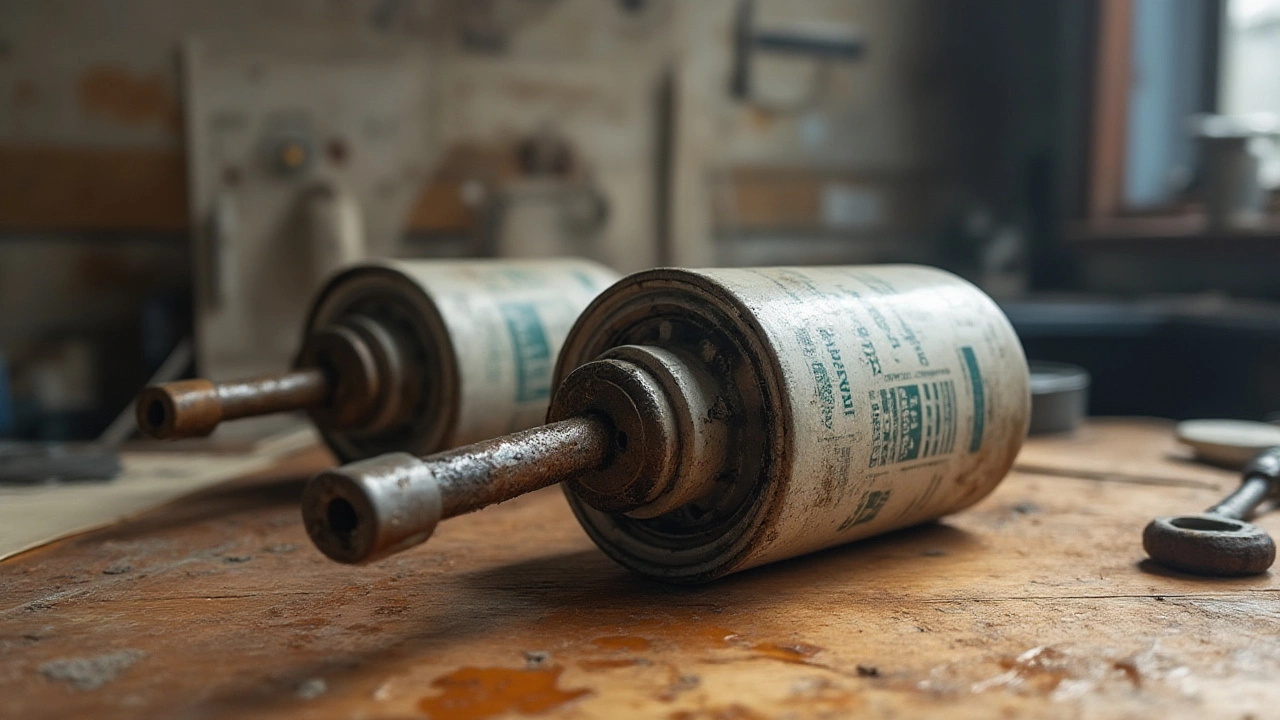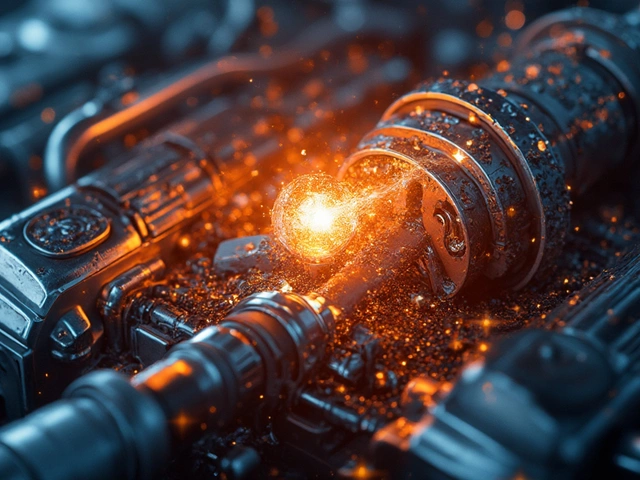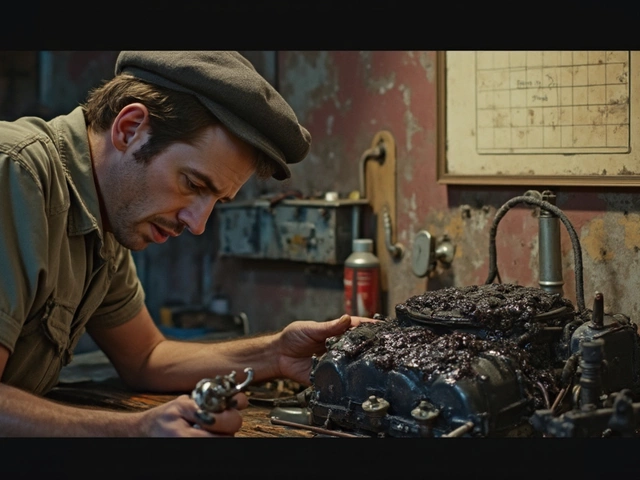Ever stomped on your gas pedal and felt... nothing? Or worse, had your engine sputter on the way to work? If that scenario scares you, you’re not alone. A car that can't deliver fuel properly sets off a minefield of worry. Maybe it’s the fuel filter. Maybe it’s the pump. Mess those up and you’ll never make it past the driveway. So, how do you tell which part is ruining your morning—and what can you do about it?
Classic Symptoms: Fuel Pump and Fuel Filter Gone Bad
Let’s get right to the greasy details—what happens when your fuel system starts acting up. A bad fuel pump is the star villain of a lot of ‘car won’t start’ stories. Often, it leaves you stranded with little or no warning. But sometimes, it’s the not-so-flashy fuel filter quietly choking your car's lifeblood—fuel. How do you tell them apart?
Start with the sound test. When you turn the ignition to 'on’ but not cranking, you should hear a faint whir from the rear. That’s the pump priming itself. Silence usually isn’t golden here. A quiet pump could be dead or just muted by a clogged filter restricting flow. If the car cranks and tries to start, but can’t keep running, the fuel filter’s probably clogged enough to starve the engine when it actually needs fuel.
Acceleration woes? An engine that hesitates or stumbles when you get on the gas is waving a giant red flag. The culprits: fuel pump can’t keep up, or a filter so dirty it’s starving your motor. Got a rough idle or the engine just coughs and quits as you pull away from a light? Again, low fuel pressure plays a role. Most folks blame spark plugs, but really, it’s fuel delivery half the time.
Don't ignore the hard start or sudden stalls, especially if your check engine light pops on. A real-world fact: more than 70% of fuel pump failures reported in U.S. garages showed an upstream cause—a filthy filter or running low on fuel too much. Use this as a clue the next time your car acts up after fuel level dips low.
Look out for these key symptoms broken down:
- Labored starts or car won’t start at all.
- Engine stalls randomly, especially under stress (like highway speed or climbing hills).
- Sudden surges or engine misfire when accelerating.
- No fuel pump noise when you turn the key.
- Check Engine light with codes related to fuel delivery, lean mixture, or misfire.
- Obvious loss of power when going uphill.
Someone I know once ignored a ‘fish-tailing’ start for weeks before getting stranded late at a rural gas station—bad pump! Fuel pumps often die with the car just sitting at idle, which is a bizarre feeling. Filters, in contrast, slowly strangle power over time, leading to ‘soft’ failures and gradual power loss that sneaks up on you.
How Fuel Pumps and Filters Actually Work
Modern fuel systems aren’t just hoses and metal cans; they’re a careful dance of electronics and mechanics. Knowing how these parts work helps when you start your detective work.
The pump—usually living inside your tank—pressurizes fuel, then channels it to the engine. Most cars since the '90s use electric pumps that spray fuel under a set pressure, ensuring your motor never gets thirsty. Older models sometimes used mechanical pumps bolted to the engine. But today, if that immersed pump fails, your options are limited: call a tow.
The humble fuel filter hides along the fuel line—sometimes up front near the engine, sometimes back by the tank. Its job? Trap junk: rust, dirt, dust, bits from a crumbling gas tank, even unleaded nasties. Think of it as your bloodstream’s kidneys. Over time, filters clog up, especially if you skimp on regular changes or buy gas from sketchy places.
Curious just how fast a filter plugs up? If one-tenth of a gram of sediment gets trapped every few months, a filter can clog within a year. And with high-pressure systems (think fuel-injected engines), flow has nowhere to go but back—leading to pressure loss and sputtering starts.
A lot of newer cars have ‘lifetime’ fuel filters buried in the tank, supposedly never needing service... except they clog anyway, just more dramatically. One study by AAA showed over 20% of breakdowns they responded to were traced to restricted fuel flow, filter or pump failure.

Quick At-Home Tests Before You Panic
Troubleshooting fuel problems doesn’t always demand a mechanic's paycheck. You can try a few easy tests that’ll get you answers without crawling under your car (well… most of the time).
First up, check for power. With the key on (engine off), listen for the pump at the back by the tank. Borrow a buddy to turn the key while you crouch near the rear wheel—it’s a faint electrical hum, not a roar.
If you can’t hear a thing, try tapping the bottom of the tank while a helper cranks the engine. Sometimes, a stuck pump will spring to life for a few last gasps. No dice? Double-check fuses and relays in the fuse box—it’s surprising how often a blown fuse knocks out a fuel pump. (Don’t forget, rodents love chewing wiring on cars sitting out all winter.)
For filters, look for a test port—a little Schrader valve, usually—on the fuel rail. Press it gently (use a rag!) with the key on. Fuel should spray out strongly. Weak squirt? Clogged filter, dead pump, or both. If you have a pressure gauge handy, most fuel-injected cars want 35-55 psi at the rail. Anything below 30 psi and you’ve found your culprit.
Don’t trust your nose or the ‘sniff’ test. Modern gasoline blends lose their punch quickly; you can’t always smell trouble. But you can look for these clues during a no-start:
- Does the car start with a quick shot of starting fluid in the air intake? If yes, suspect fuel delivery—filter or pump.
- Engine starts but immediately dies? Again, fuel isn’t getting where it needs to be.
- Long crank times (engine turns over and over) before finally sputtering to life.
One trick from old-school mechanics: if you can reach the filter and unplug the lines, blow through it by mouth (if you don’t mind the taste). If air barely gets through, that filter’s toast. This little backyard diagnostic tip saves more time than guessing.
Common Causes and Myths About Fuel Problems
There's a whole shadow world of myths around fuel pumps and filters. Some you might’ve heard: Always keep the tank half-full, or you’ll burn up the pump. Or, fuel filters only need changing if you run bad gas. But what’s actually true?
Running low on gas too often does make the pump earn overtime. An electric pump lives in the tank for a reason—it actually gets cooled by the fuel itself. Starve it, and the pump overheats. One automaker’s white paper shows fuel pumps run up to 20°F warmer when the tank’s below one-quarter full. Overheating shortens the pump’s lifespan dramatically. So those grandmothers insisting you never drive on ‘E’ are half right.
Aftermarket fuel filters? Still vital, no matter what your owner's manual says. There’s no such thing as a ‘lifetime’ filter when you’re dealing with reality: rusty tanks, mystery gas stations, and how often people forget about regular service. Water in gas isn’t rare; it sneaks past weak filters and rusts out fuel pumps. Modern filters cost less than a tank of gas and can save a thousand-dollar repair bill. Skipping them is a bad bet.
A key myth: If your check engine light hasn’t come on, your fuel system’s fine. Not true. Many fuel problems don’t pop a code until the issue is severe. You might get a ‘lean mixture’ or ‘cylinder misfire,’ but these are after-the-fact symptoms. Prevention works better than waiting for disaster.
Curious how often these problems show up? Take a look at this breakdown from a recent AAA survey:
| Failure Type | Frequency (%) |
|---|---|
| Fuel Pump Failure | 41 |
| Clogged Fuel Filter | 33 |
| Other Fuel Delivery | 26 |
Those odds are enough to take fuel maintenance seriously. Factory-recommended intervals exist for a reason, but they often err on the ‘too generous’ side. If you do lots of city driving, or fuel up at discount stations, move those intervals forward.

Maintenance, Upgrades, Tips, and When to Call for Help
The best way to beat fuel problems is plain old maintenance. Don’t wait for failure—replace your filter every 30,000 miles, or whatever your trusted mechanic suggests. Modern ethanol blends and bad stock at the pump have made regular filter swaps more crucial than ever. If your filter’s inside the tank (so-called ‘lifetime filters’), ask about swapping it at 100,000 miles anyway—especially if you plan on keeping the car.
Fuel pump upgrades are popular with enthusiasts, but swapping in a super-powerful pump ‘just in case’ can actually make things worse. More flow than your system needs messes up fuel pressure and can overflow your injectors. Unless you're modding your engine to race specs, stick to the parts your car originally came with.
It's worth mentioning: fuel system cleaners don’t work magic. They help with mild injector deposits, but if your pump or filter is on its last legs, a bottle of cleaner won’t resurrect it. Invest your cash in real parts, not snake oil.
Ever had a pump fail on the road? Don’t bother pouring gas down the throttle or knocking on the tank with a hammer—if the pump’s toast, only a replacement will do. Call roadside assistance. But sometimes, a gentle tap on the gas tank can restart a dying pump, giving you a few more miles to limp to safety. Only try this if there’s no other choice.
If you experience two or more symptoms mentioned earlier and your car’s got over 80,000 miles, book an appointment before you end up climbing into an Uber. Modern cars are more sensitive to fuel issues because of tighter emission standards. Problems pop up quicker—and are more expensive to ignore—than rides from a decade ago.
Some car makers (Toyota, Ford) have built-in diagnostic modes. Cycle the ignition key three times (key on, key off, key on…), then listen for buzzes or warning noises. If you’re handy, a cheap fuel pressure gauge can tell you within five minutes whether you’re looking at a clogged filter or a failing pump.
Want a quick prevention checklist?
- Change your filter at least every 30,000 miles, or more often in dusty areas or if you use ‘frontier’ gas stations regularly.
- Keep your tank above a quarter full to keep the pump cool and healthy.
- Watch for engine surges, stalling, and hard starts—fix early, not late.
- Don’t ignore a check engine light with a fuel or misfire code, even if the car still runs.
- Pay attention to fuel pump sounds at each start—get to know your car’s normal noises.
In the end, your fuel pump and filter are there for one thing: to keep you on the road. Catch the early warnings, keep up on maintenance, and you won’t lose another weekend to a silent, stalling engine.






